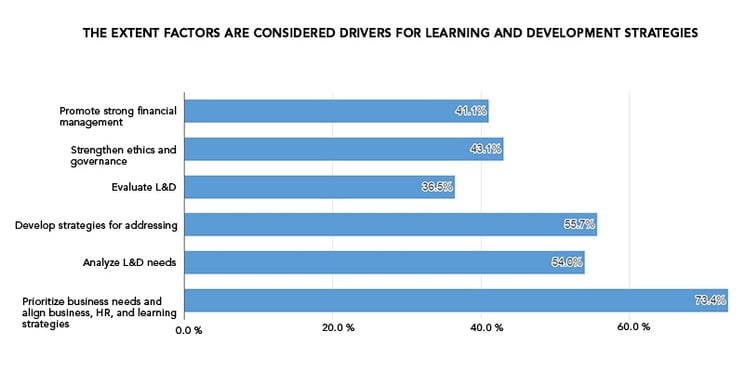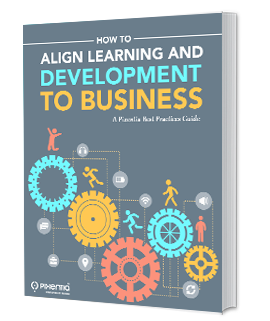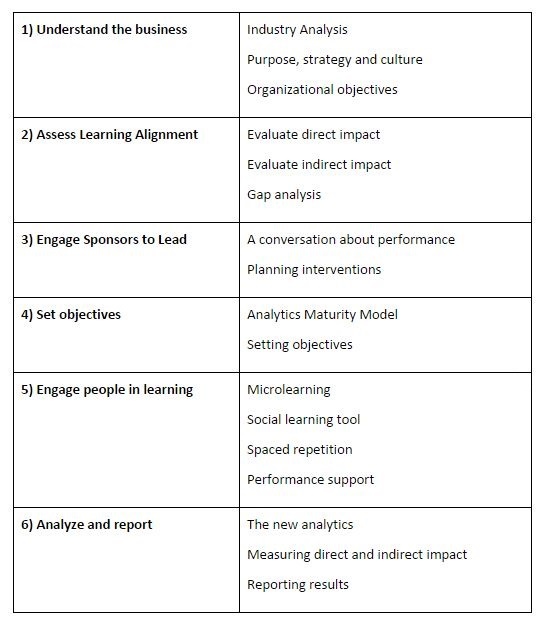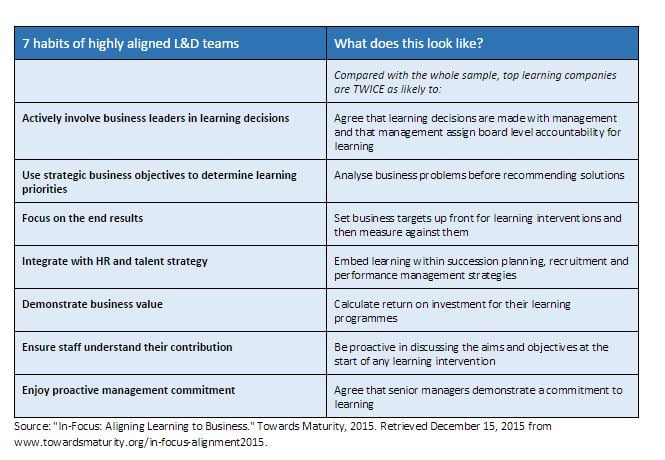
The future skills gap has brought learning and development into focus as a top business issue. In the Deloitte Global Human Trends 2015, only 28% of participants indicated they were ready to take on their workforce challenges. Eighty-five percent of participants said learning is “important” or “very important,” but only 46% described their organization as ready to take on the issue.
From our perspective, the primary reaction has been an investment in technology. Learning technology investment is growing at over 25% per year and shows no sign of slowing down. New e-learning capabilities are making learning easier to manage and more effective.
However, we maintain that technology alone is not the answer. The real challenge today is to align service delivery with organizational objectives and measure the impact on the business.
Results are mixed. Towards Maturity, a non-profit dedicated to helping organization improve performance through learning, provided the following benchmark assessment:
- “39% of L&D professionals were not confident that their learning initiatives actually supported the skills that the business needs.
- Only 55% analyze the business problem before recommending a solution.
- 36% of organizations work with business leaders to identify business performance indicators that they want to improve.” (Aligning Learning to business). TowardsMaturity.org. 2015).
The Brandon Hall Group’s 2014 benchmarking study indicates real progress but shows Learning and Development has a long way to go.

The company suggests that the path to creating a high-performing learning organization requires four critical components:
- C-Suite leadership. The evidence in the study shows that in high-performing learning organizations, the CEO sets the L&D strategy.
- Social Learning. Actually, social is only one part of a complete learning experience. e-Learning makes it cost-effective to provide a continuum of activities over multiple channels, over time, to support performance.

- Measuring the impact of learning. Standard Kirkpatrick Level 1 measures are no longer enough. We need to correlate efficiency and effectiveness measures with business results.
- Total Integration with talent management. Integrating learning with onboarding, performance management, goal management, and succession planning is now an essential function of human capital management technology.
Over the next few weeks, we will address these issues with a six-step structured approach to alignment, management, and measurement.
 The Vision
The Vision
Before we begin, let us present a clear picture of what aligned learning can be:

Whether this is a review or your first foray into strategy and analytics, we hope you will find our discussion helpful. We look forward to giving you the next installment in our series. Go with us on our journey to quantifiable business impact and a stronger strategic partnership.
References
"Aligning learning to Business." Towards Maturity. 2015. Accessed December 15, 2015.
Grebow, David. "Study Shows Corporate Learning & Development More Aligned to Business Goals." Training Magazine. March 27, 2014. Accessed December 15, 2015.
"Learning and Development: Into the Spotlight." Deloitte University Press. February 27, 2015. Accessed December 15, 2015.
Pappas, Christopher. "The Top LMS Statistics and Facts For 2015 You Need To Know - ELearning Industry." ELearning Industry RSS. May 26, 2015. Accessed December 15, 2015.
Phenomecloud is a full-service technology company dedicated to helping clients solve business problems, improve the capability of their people, and achieve better results.





Leave a Comment